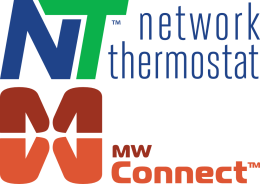Recently, there has been increased attention on indoor air quality, and the effect it has on the health, focus, and productivity of everyone in crowded spaces such as office buildings, retail, restaurants, manufacturing facilities, and schools. For this article, we'd like to focus on students in classrooms. California's Title 24 CO2 requirements set the standard for CO2 measurements and alerting in school classrooms. NetX X7 thermostats with CO2 sensors meet or exceed all these requirements.

The NetX CO2 Difference
NetX CO2 sensors are a groundbreaking system-on-a-chip MEMS technology that is built on the principles of photoacoustic spectroscopy (PAS).
The PAS technology features far superior accuracy than the so-called eCO2 sensors that you may see in residential products. The 'e' in eCO2 sensors stands for 'equivalent' because they don't actually take measurements, they use many assumptions (such as how many people are present) to build their algorithms to calculate an equivalent CO2 value. While some companies believe educated guesses are okay in a residential setting, true and accurate measurements are required when integrating logic decisions into commercial HVAC controls. That is why the NetX uses PAS CO2 sensors, which are also self-calibrating and designed to maintain their accuracy for at least 5 years without the need to even check calibration.
When installed (or included) in the X7 Series thermostat, CO2 readings are displayed prominently at the top of the X7 faceplate in the dot matrix display. Taping on the CO2 reading will give you the maximum recorded CO2 level making classroom CO2 tracking easy for teachers.
Fresh air (outside air) in rural and suburban areas is typically around 400ppm. According to the American Society of Heating and Refrigeration and Air-conditioning Engineers (ASHRAE), the recommended CO2 levels in buildings should not exceed 700 ppm above the outdoor air measurements. And while urban centers can rise to 600-900ppm, experts agree that the ideal limit for indoor CO2 measurements should not exceed 1100ppm.
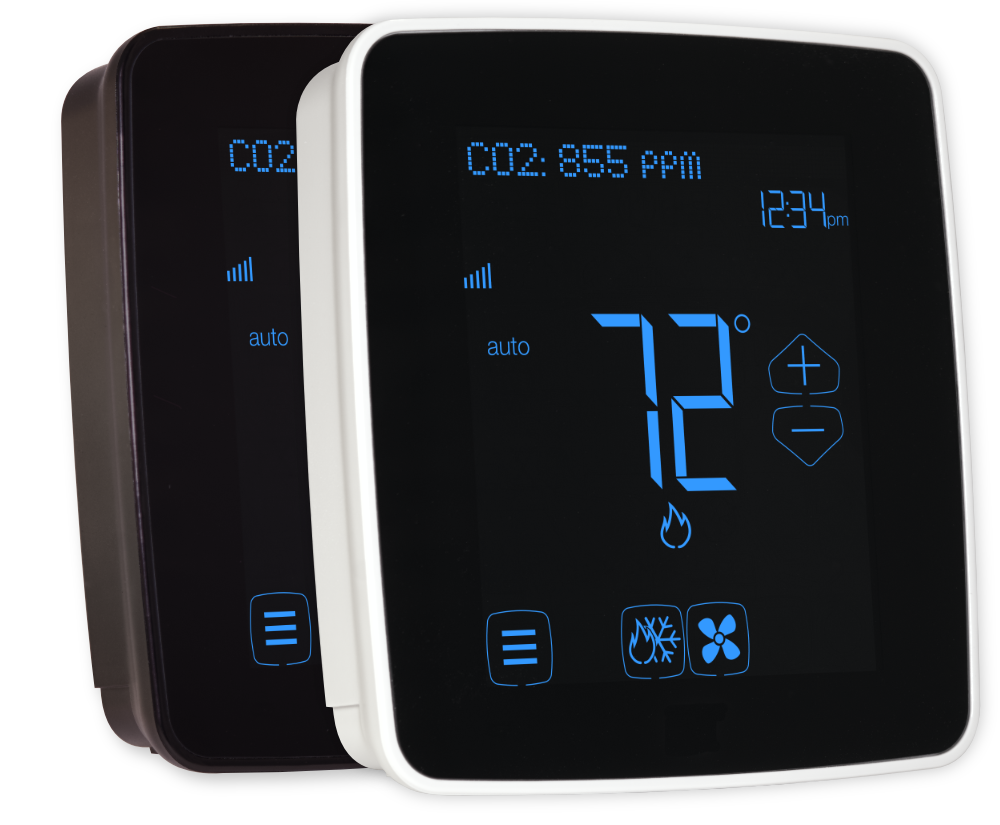
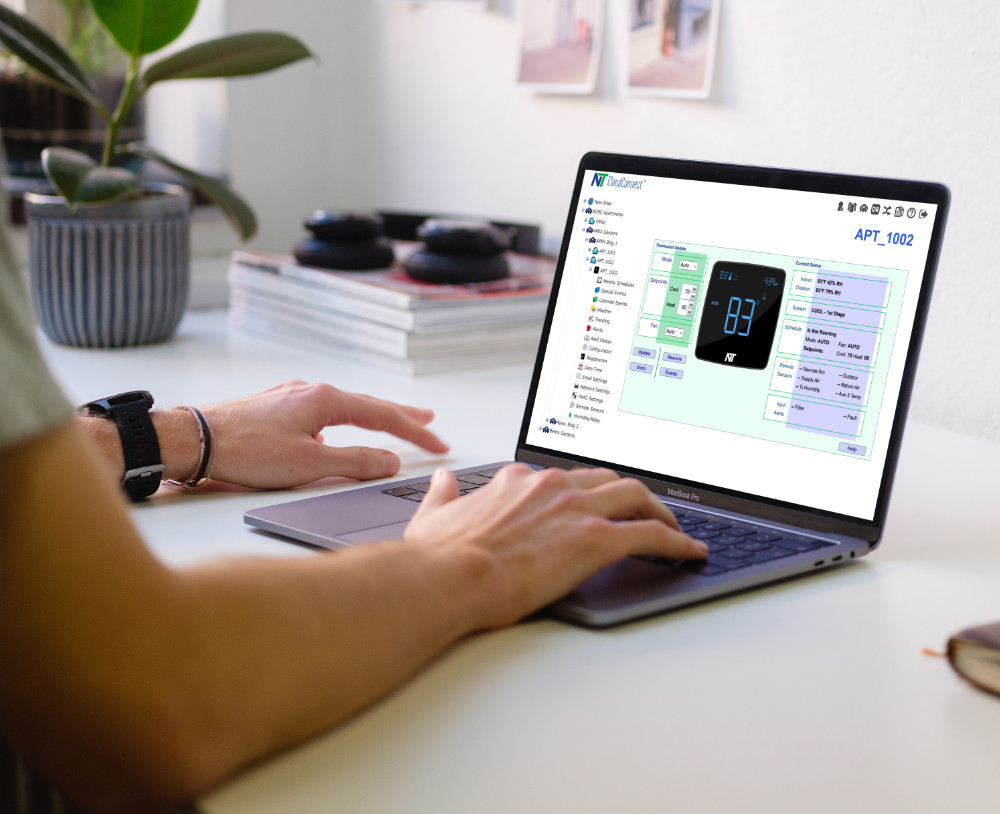
When the CO2 Alert Level is exceeded, the power of NetX springs into action. First, an alert notification is presented on the X7 faceplate. Simultaneously, it sends an alert message (via text and or email) to the management so they can take action if warranted. Finally, the X7 manages fresh air damper(s) to reduce the CO2 in the classroom space. These configurable actions are immediate. The results are optimized conditions for students to thrive.
Easy Setup for Facility Managers
The ability to easily control and configure the X7 thermostat makes NetX a popular choice among Facility Managers. Simple CO2 functions can be set from the faceplate using the easy-to-read color touchscreen display. The CO2 settings can be configured from our cloud interface or via the embedded webpages for the 'behind the firewall' operation.
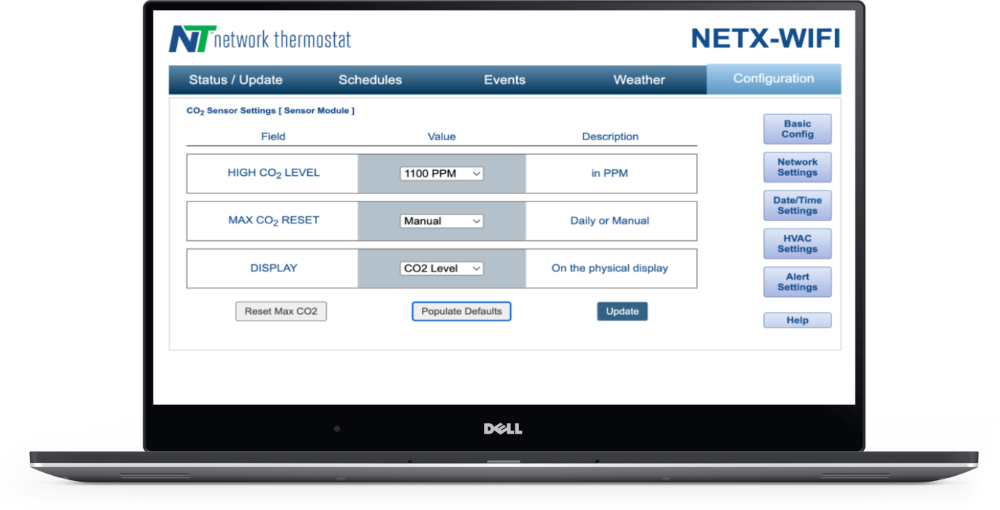
(CO2 Settings Page)
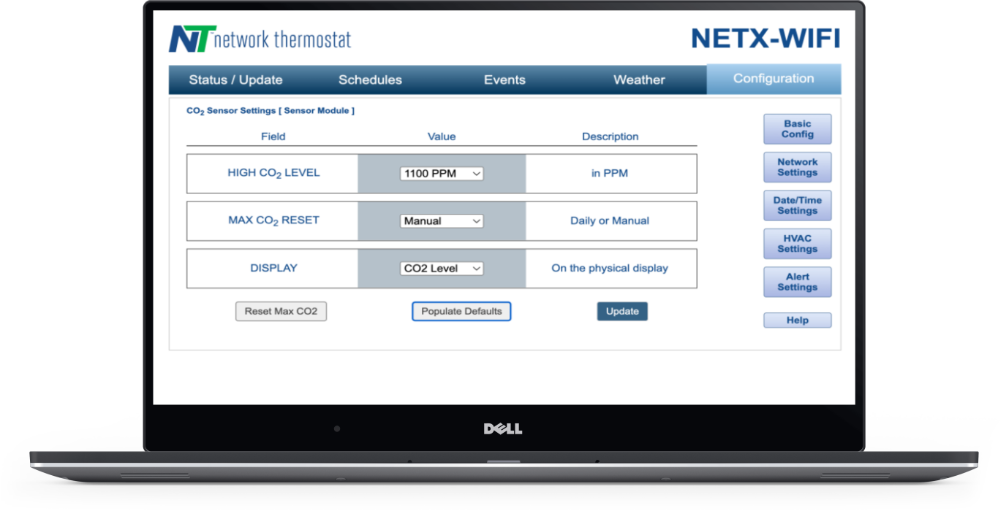
(CO2 Relay Page)
The X7 can be configured to trigger output relays that control fresh air dampers in the event CO2 exceeds the alert level or if the X7 detects a CO2 sensor failure.
If the thermostat detects an error from the CO2 sensor, a special alert (email and or text message) is sent to the facility manager. This helps assure a safe environment for occupants. CO2 sensor status, readings, and alerts are all data logged and available for viewing from our cloud.
Using our patent-pending UV-C monitoring and control, humidity control, and IAQ monitoring with our CO2 capabilities, the X7 Series thermostat provides the best control for creating optimal environmental conditions. For more information on how to meet California Title 24 HVAC standards. Contact Us below.

